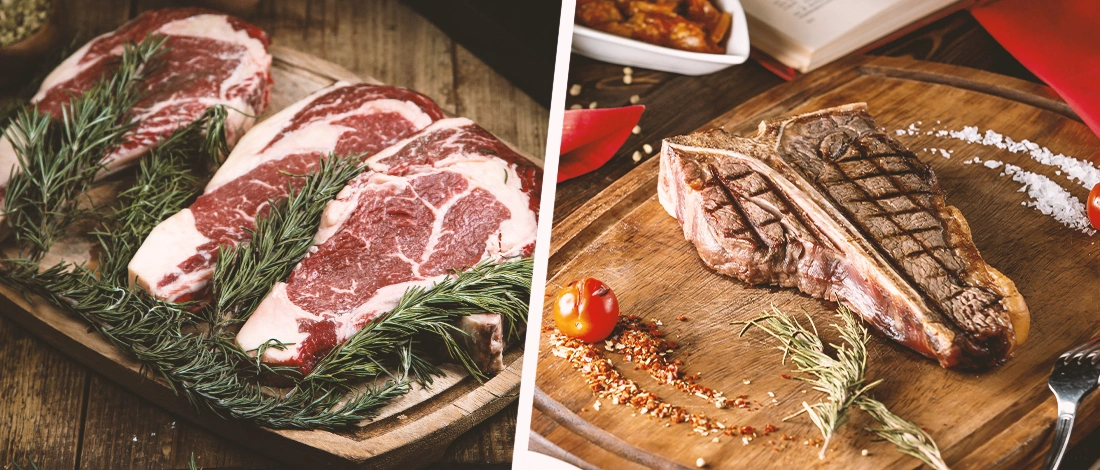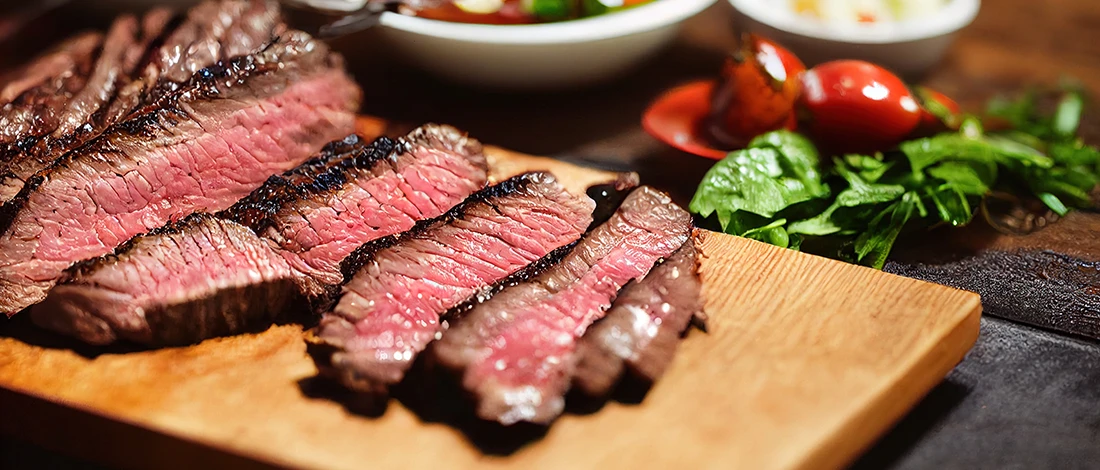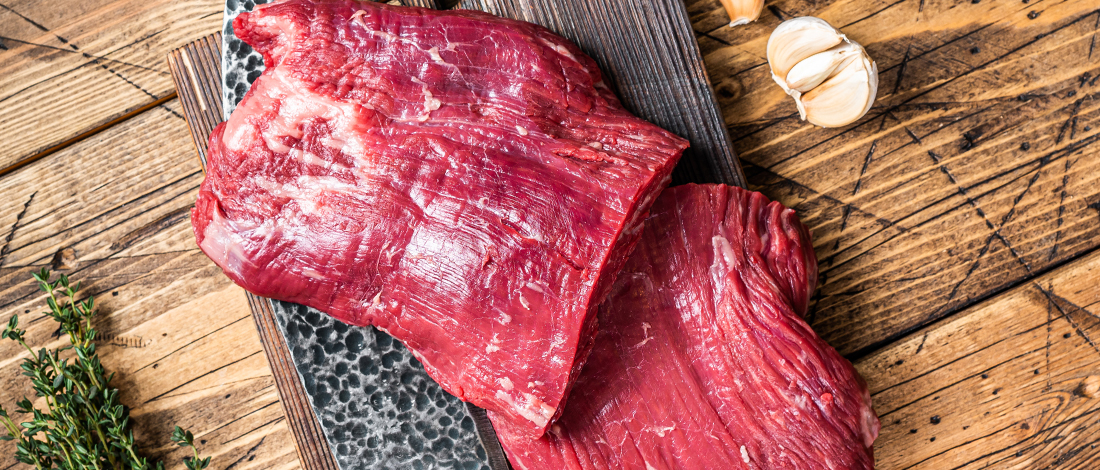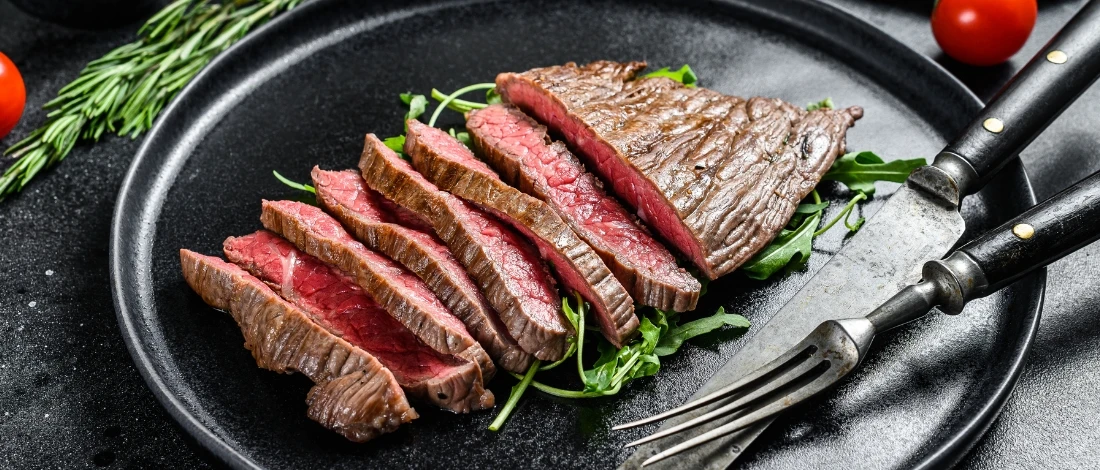As a devoted carnivore, I live for the barbecue season. But for every summer get-together, I face the same dilemma: should I serve beef brisket or flank steak?
Both cuts of beef are popular barbecue staples, which are distinct in characteristics, taste, flavor and texture.
Whichever you choose, Carnivore Style recommends that you start with top-quality beef like that found at the best meat delivery services, such as ButcherBox.
As a professional chef and an expert in meat dishes, I’ll share my expertise with you and help you make the best choice when deciding which of these two to prepare for your next barbecue.
Quick Summary
- Brisket is a cut of beef taken from the upper chest region with a higher fat content, while flank steak comes from the abdominal muscles and is much leaner than brisket.
- Brisket requires slow cooking methods for several hours, while flank steak is best cooked over high heat and served rarer than brisket.
- Both meat cuts may be used for various dishes, but brisket and flank steak each have their advantages and disadvantages.
9 Differences Between Brisket and Flank Steak
Although these two cuts of meat are both versatile cuts, brisket and flank steak are not the same. Here are their main differences.
1. Location of the Cut
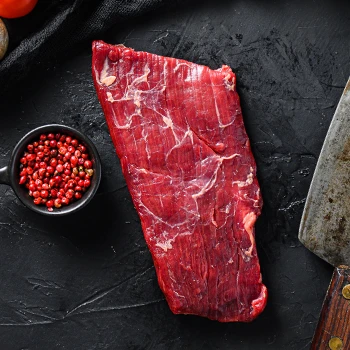
Both brisket and flank steaks come from the lower portion of the cow. Beef brisket comes from the breast portion, while flank steak (or London broil on restaurant menus) is taken from the abdominal muscle near the hip and hindquarters.
The breast area pectoral muscles are well-exercised, resulting in more tone and tougher texture. The brisket has a flat section, known as the “first cut,” and a pointed section called the “second cut.”
Like short ribs, flank steak is a cut from the abdominal muscles, but farther back from the front legs and breast area.
2. Size
The brisket is a large cut of beef that typically weighs 8-12 pounds, though a “whole packer” can top out above 20 pounds.
It’s best cooked whole in the oven or slow cooker and can be served as a single roast for larger gatherings.
In contrast, flank steak is much smaller, generally weighing 2-4 lbs. Although London broil can reach a foot in length, it is more of a flat cut of meat than beef brisket - ordinarily only an inch or two thick.
3. Appearance
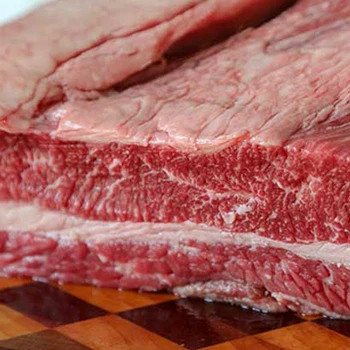
Brisket has a thicker layer of fat on one side, as well as more marbling throughout the meat. It’s often sold with that fat cap still intact, which gives it a unique and flavorful taste.
Flank steak is much leaner and carries a deep red hue. It’s often sold in a rectangular shape, with no fat cap and little marbling.
4. Texture
Brisket has more fat content than flank steak, and the long fibers require prolonged cooking time to break down.
It has a denser, juicier, chewier texture that stands out when cooked slowly over a low fire.
Flank steak has less fat and is much leaner than brisket. It has a firmer bite than beef brisket and needs to be cooked correctly - fast with medium-high to high heat cooking - to keep it from becoming too tough.
Read More: Which Are the Leanest Cuts of Steak?
5. Flavor

Both brisket and flank steak have a bold and beefy taste, but the fat content of the brisket gives it a slightly richer taste.
Rubs and seasonings adhere better to the extra fat and emboldens the meat while slow cooking.
Flank steaks are a lean cut and the flavor may be enhanced when prepared with strong seasonings or a marinade.
6. Cooking Time
Brisket is best cooked slowly over low heat, usually about 200-250°F, until the center of the meat is tender.
This can take anywhere from 4 to 12 hours, depending on the size of the whole packer and your cooking method. It’s best cooked until the internal temperature reaches 185-200°F [1].
Unlike brisket, flank steak is best cooked quickly over medium-high to high heat until medium-rare and the internal temperature reaches 130°F [2].
This should take less than 10 minutes per side. It’s important not to overcook the flank steak, or it can become tough and chewy.
7. Cooking Methods

A brisket cooks well when braised or barbecued. The most iconic way of cooking brisket, though, is smoking it.
Smoking produces incredibly flavorful and tender meat that can be pulled apart and is perfect for corned beef, sandwiches, or stews.
Flank steak is best prepared with quick-cooking methods like grilling and pan-searing.
The meat is popularly used in tacos, stir-fry, and other dishes that require it to be cut into smaller pieces.
Flank steak should be allowed to rest for 10 minutes after cooking to allow the juices to settle. It also should always be sliced thinly against the grain for a more tender texture.
8. Price Range
On a per-pound basis, brisket tends to be a better deal than flank steak at the grocery and big box stores.
By weight, brisket can cost less than half of what flank steak does [3].
On the average, brisket is priced at $5 per pound. The cost of flank steak ranges from $7 to $14 per pound.
9. Marbling
Due to its higher fat content, brisket has more marbling than flank steak. On the other hand, flank steak is much leaner and carries very little marbling.
If a well-marbled piece of meat is what you’re after, beef brisket is the way to go.
“Brisket is one nasty cut of meat. It will fight you ferociously as you try to tame it. Once you do, though, it lays down like a cuddly puppy and rewards you with a big, delicious hug.”
- Danny Meyer, Restauranteur
Related Articles:
Pros and Cons of Brisket vs. Flank Steak
Both brisket and flank steak have their advantages and disadvantages.
1. Brisket
- Very flavorful due to its high fat content
- This inexpensive cut is still juicy and tender when cooked properly
- Versatile, it can be smoked, braised, or barbecued
- Long cooking time (4-12 hours)
- Large size, which makes it suitable only for a large number of people
- A naturally tough cut of meat that only responds well to slow smoking or other low-temperature cooking
2. Flank Steak
- Flank steak is leaner than brisket and lower in fat
- Flank steak has a quick cooking time (less than 10 minutes per side)
- Compared to other steaks, flank is an inexpensive cut of beef
- Flank steak needs to be cooked quickly and at high temperatures, or it can become chewy, tough meat
- Flank steak may miss the extra flavor of brisket due to its lower fat content.
FAQs
Is Brisket the Same as Skirt Steak?
Brisket is not the same as skirt steak because brisket is taken from the lower chest area of the cow, while skirt comes from the diaphragm muscle near the ribs.
Is Flank Steak or Brisket Better for Pho?
Flank steak is considered better than brisket for pho because it is leaner, more tender, and cooks quickly in the broth. The long cooking time required for brisket can make it too chewy for a pho dish.
Can You Cook Brisket Like a Steak?
You cannot cook brisket like a steak and expect to have a tender, juicy piece of meat. Brisket is a large cut of beef that requires slow cooking methods to break down the tough muscle fibers and fats.
What Cut of Meat Is Closest to a Flank Steak?
Skirt steak is the cut of meat that is the closest to a flank steak. Both of these are long and thin cuts of meat that come from the underside of the cow and can be substituted for most dishes.
Both brisket and flank steak bring unique qualities to your cooking experience, and knowing their differences will help you make the perfect choice for your next barbecue. At Carnivore Style, we believe understanding these cuts is essential for any true meat lover, and we encourage you to explore more delicious recipes and tips to elevate your carnivore journey.
References:
- https://www.foodnetwork.com/how-to/packages/food-network-essentials/what-is-brisket



